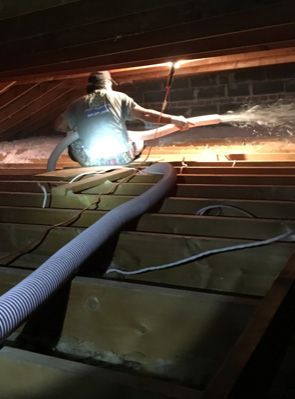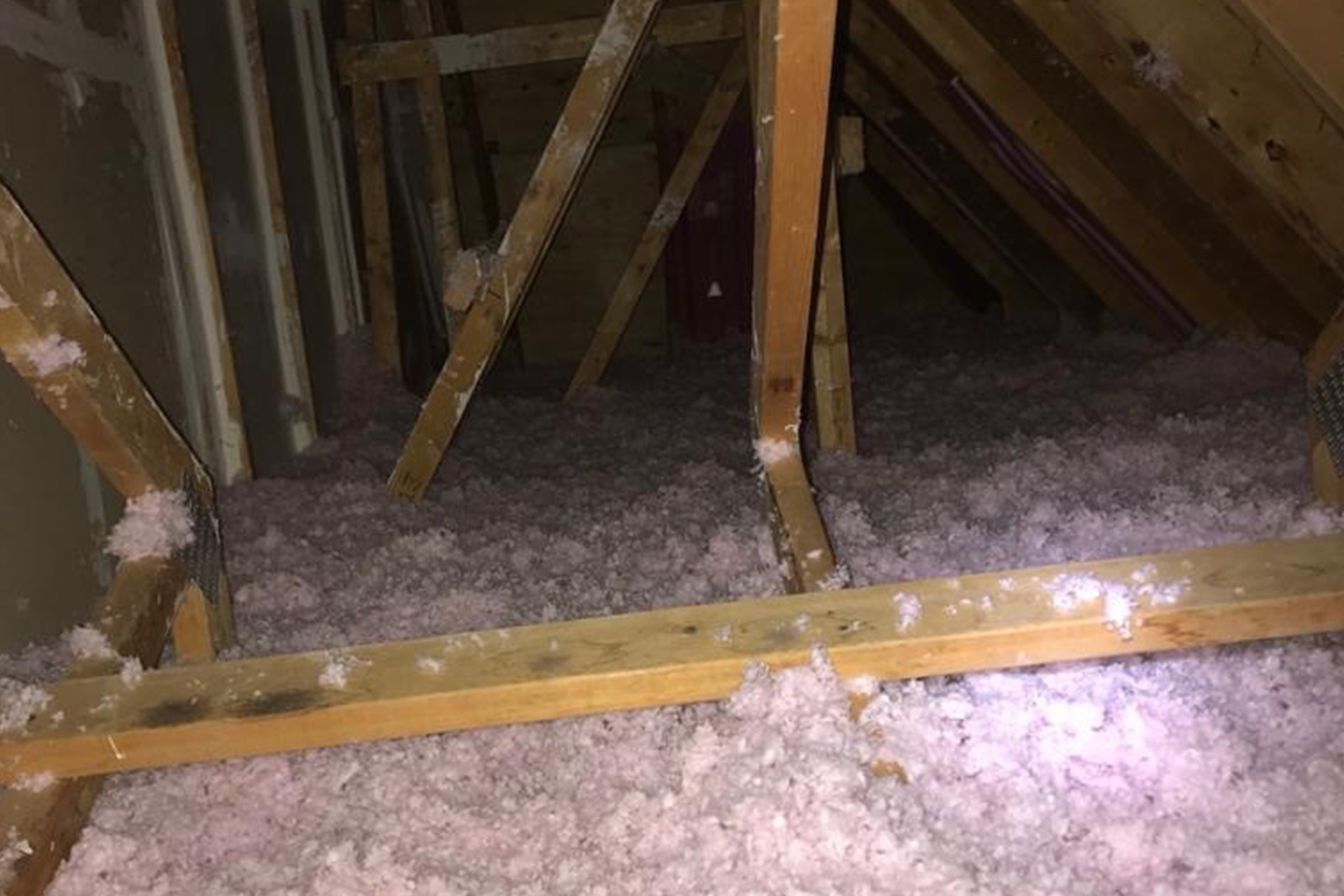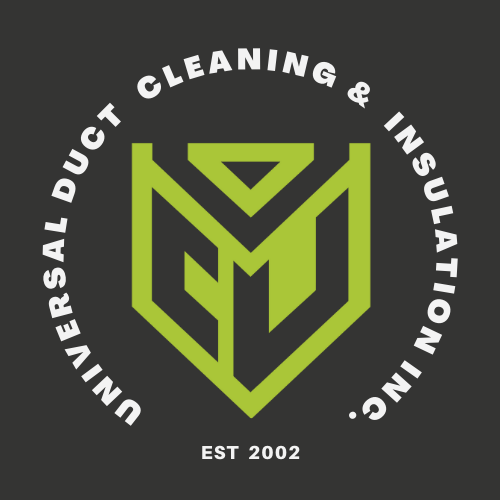Insulation
How much does it cost to remove attic insulation?
Naturally, this is a common question with a major project like insulation removal. The fact is, there are several variables – the size of the attic; the condition of the existing materials; and the type of product chosen for re-installation. At Universal Duct Cleaning and Insulation, we start off with a FREE attic assessment to determine how best to remove and re-insulate. We will also recommend the best product option based on your needs. Bottom line, your price will differ with the type of insulation product and with the installation approach.
Can a blown in insulation product be removed?
In a space like the attic, some insulation products are easier to remove than others. In many homes, the attic is insulated with blown-in fiberglass or blown-in cellulose. This type of removal is easier than other insulation, but must be performed by a professional to ensure proper clean-up and proper disposal. Removing insulation rolls (or batts) can be more labour intensive, but here again it should be performed by a professional. The key is to ensure a comprehensive clean up of all residual materials. This will set the stage for an effective re-installation of new material.

Can new attic insulation be installed over old?
For many homeowners, a home renovation is the ideal time to remove old insulation and install new insulation. However, in many cases, new insulation product can be effectively installed over old insulation. The important thing is to make necessary repairs and retrofits prior to installing the new material. Simply “topping up” is not satisfactory – the attic space must be properly air-sealed and properly ventilated in order to create a complete “system”. Professional contractors will insist on this approach in order to guarantee the best performance for the new insulation.
How can attic insulation be removed safely?
The best approach for insulation removal is to work with a professional. At Universal Duct Cleaning and Insulation, in house experts have the experience to remove insulation safely and effectively. In some situations, homeowners might be tempted by a DIY approach, and could save some money in the short run. But the potential risks just aren’t worthwhile (with hazards like asbestos or mold). Insulation removal needs to be done right – with the proper tools and equipment, and without disruption to the occupants. Universal Duct Cleaning and Insulation does it from start to finish – from complete clean up to exterior disposal.
Blown In Insulation

Prolong The Life of Your HVAC System
Not only will blown insulation in your attic help to keep you and your family more comfortable, but by helping to keep the temperature in your home more stable, this also means that your heating and cooling system won’t have to work as hard to keep your home comfortable. This will result in less wear and tear on your HVAC system, helping to prolong its life. Additionally, since your system will not have to work as hard to heat and cool your home, this can mean significant savings on your energy bills. In fact, having your attic properly insulated can reduce the cost of heating and cooling your home by as much as 30%, making insulating your attic a wise investment that will easily pay for itself over time.

Noise Reduction
Due to its superior airtight seal, blown fiberglass insulation is also great at preventing noise from penetrating, or traveling throughout, your home. If you have neighbors who like to throw parties at all hours of the night, or you are tired of the pounding rain and crashing thunder outside sounding as though it is coming from within your home, adding insulation to your attic can go a long way in keeping these noises out. Conversely, if you like to make noise at all hours of the night, you have a screaming baby, or you have a loud dog, additional insulation can help to prevent you from having to worry about bothering your neighbors. Compared to other types of insulation, blown fiberglass insulation is particularly good at preventing the transfer of sound in a home.

Improve Indoor Air Quality
Blown fiberglass is also a good option for those who suffer from allergy symptoms, as this insulation does not contain any chemicals or additives that could irritate a person’s allergies. Further helping allergy sufferers is the fact that blown insulation creates a barrier that can prevent pollutants, pollens, and airborne toxins from entering your home due to air leaks caused by poor insulation. A properly insulated attic can prevent these irritants from entering, and spreading throughout, your home, which can greatly increase the air quality in your home. New insulation will also remove pollutants that may be lingering in your home’s current insulation if you live in an older home.

Improve Fire Resistance
An additional benefit of blown fiberglass insulation is that this airtight material is excellent at reducing your home’s risk of fires. As we previously mentioned, blown insulation is able to fill in all available space creating a much better airtight seal than traditional insulation. This helps to prevent air from flowing through small spaces fueling the flames above or below the insulation during a fire. Adding this insulation to your attic can then improve your home’s fire resistance.
While there are many benefits that adding proper insulation to your attic can provide you with, it is important that you choose the right type of insulation. Blown fiberglass insulation will create the best seal in your attic helping to keep your home comfortable and protected. Additionally, this insulation will also help to keep your energy bills in check.

Prevent Moisture Damage
Properly insulating your attic can also prevent the damage to your home that can be caused over time by heat and moisture. Attic insulation prevents water vapor from seeping into your home and damaging your walls, which can compromise your home’s overall structure. Proper insulation can also prevent rising heat from building up in your attic, which can cause your roof’s shingles to swell and crack, which can cause costly damage. Insulation also prevents this rising heat from creating ice dams on your roof when melting snow refreezes on your roof’s edge. Blown insulation is also moisture resistant, meaning that it can also prevent mold from seeping into your home, making it vital that a home in any climate have proper insulation.

Easy Installation
Another great benefit of loose-fill blown fiberglass insulation is that this insulation takes a fraction of the time to install compared to rolled batt insulation. Traditional insulation requires hours of kneeling on the floor cutting, placing, and securing sections of insulation. Instead, as the name implies, blown fiberglass insulation is simply blown out of a hose into your attic where it creates a seamless thermal protective layer of insulation throughout your attic. With blown fiberglass insulation, your attic will be insulated and ready to protect your home in a matter of hours rather than days.
Ideally, air conditioning maintenance should be performed twice a year, though once is sufficient for some systems. Between visits, the condenser coils can be cleaned by removing large debris and rinsing the coils with a hose, after shutting the power off.
